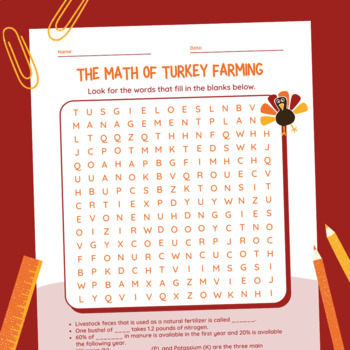The STEM of Turkey Farming - Thanksgiving Activity for Math and Science!
- Zip
- Google Apps™

Description
How do turkeys end up on our Thanksgiving tables? Explore the answer to this question through a series of lessons on the science, technology, engineering, and math of turkey farming! By purchasing this resource, you gain access to four video viewing worksheets and an editable Google Slides presentation with 33 turkey math story problems.
The worksheets provided supplement a series of four short videos created by the Iowa Agriculture Literacy Foundation to explore the STEM in turkey farming at the farm of sixth-generation farmer Ron Kardel. These videos are freely available online, and are embedded into the editable Google Slides presentation.
The editable Google Slides presentation includes vocabulary words to pre-load before playing the videos, as well as turkey math story problems related to math introduced in the video series.
This material is geared towards students in the 3rd to 8th grades. It is also recommended for use in remedial math and science classes at the high school level, as well as in special education math and science classes.
This unit can span 1-4 days, depending on the level of support that your students need for the math problems. It is a great teaching tool to work together with your students!





